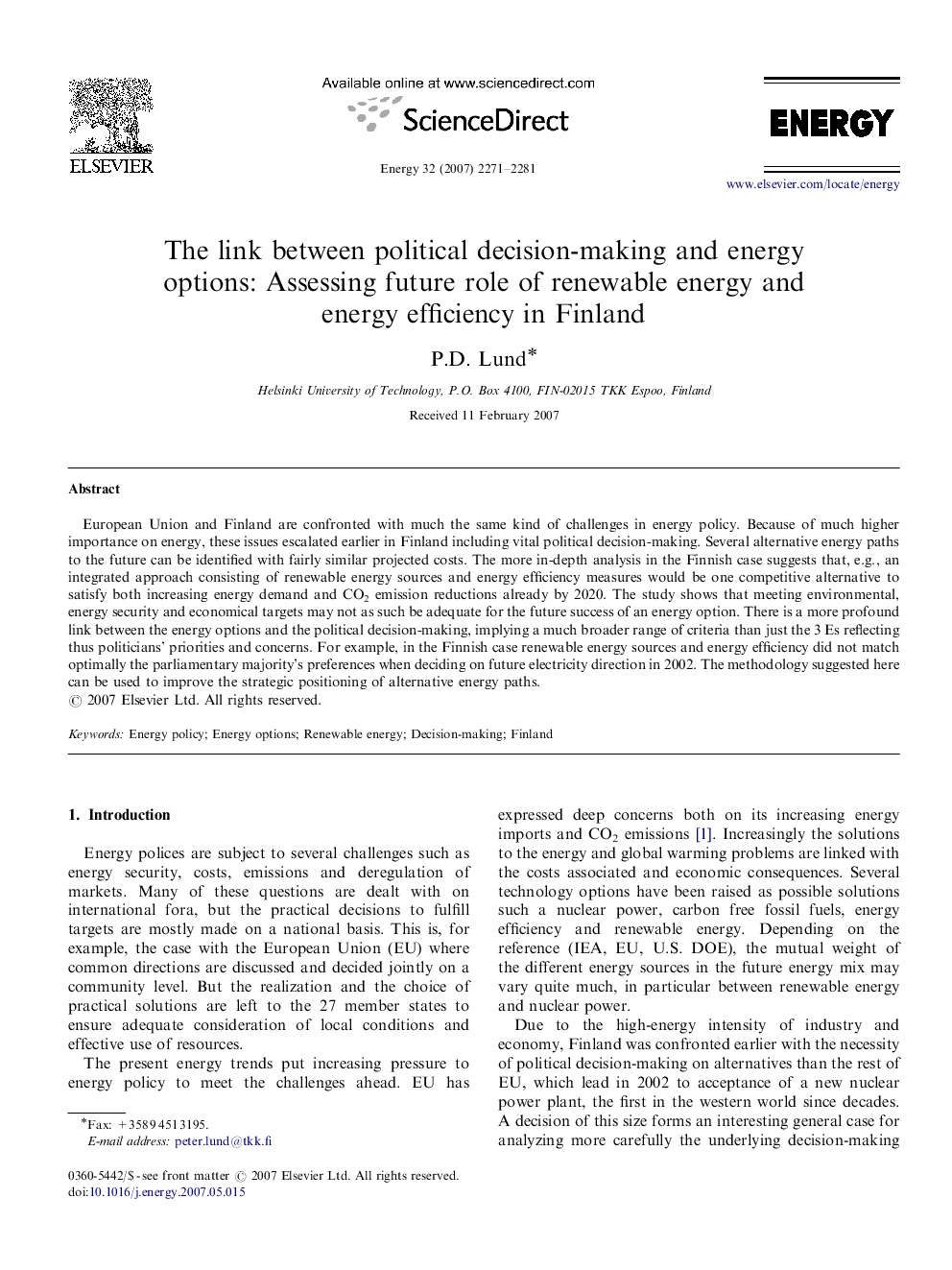| Article ID | Journal | Published Year | Pages | File Type |
|---|---|---|---|---|
| 1735978 | Energy | 2007 | 11 Pages |
European Union and Finland are confronted with much the same kind of challenges in energy policy. Because of much higher importance on energy, these issues escalated earlier in Finland including vital political decision-making. Several alternative energy paths to the future can be identified with fairly similar projected costs. The more in-depth analysis in the Finnish case suggests that, e.g., an integrated approach consisting of renewable energy sources and energy efficiency measures would be one competitive alternative to satisfy both increasing energy demand and CO2 emission reductions already by 2020. The study shows that meeting environmental, energy security and economical targets may not as such be adequate for the future success of an energy option. There is a more profound link between the energy options and the political decision-making, implying a much broader range of criteria than just the 3 Es reflecting thus politicians’ priorities and concerns. For example, in the Finnish case renewable energy sources and energy efficiency did not match optimally the parliamentary majority's preferences when deciding on future electricity direction in 2002. The methodology suggested here can be used to improve the strategic positioning of alternative energy paths.
